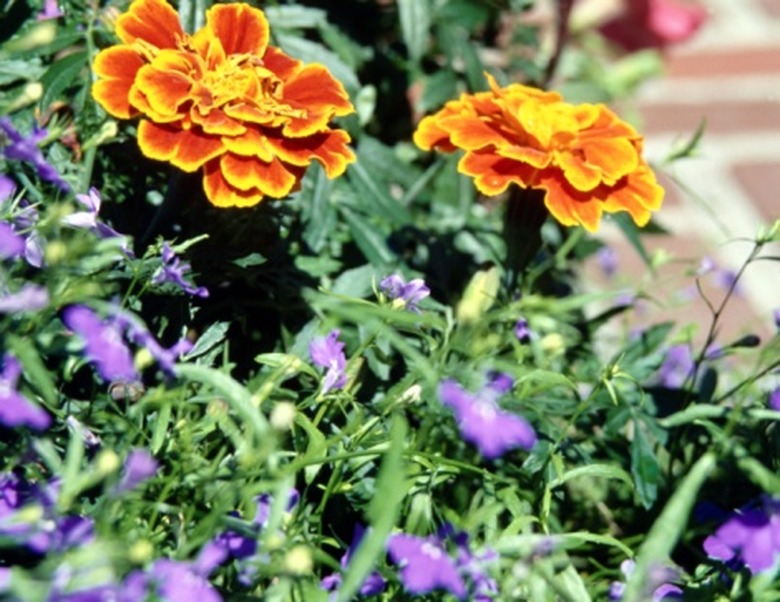Temperature For Planting Flowers
Flowers vary so greatly in fragrance, color and form, it comes as no surprise to find they are not equal in temperament and growing requirements. While many can endure a wide range of climatic conditions, the temperatures in which they thrive are fairly limited. The best temperature for planting a given flower depends on the characteristics of the plant and its preference for cold or warm weather.
Tender Perennials
Tender perennials such as fanflowers, petunias, geraniums, impatiens and salvia are often sold as annuals. In tropical climates or frost-free zones, these plants grow year-round. Because exposure to frosty winter weather will kill the fragile roots, many gardeners regard these plants as annuals since they must be replanted each year. Given that tender perennials are not cold hardy, they should not be placed in the garden until there is no real risk of overnight frost and the average low temperature is at least 55 degrees Fahrenheit. Sow seeds indoors two to three months before the average day of the last frost, as perennials tend to be slow-growing.
Cool-Season Annuals
Cool-season annuals such as bluebonnets, pot marigolds, China pinks, blue daisies and sweet peas grow best during early spring and wither or die in summer heat. Freezing temperatures don't harm the seeds, which often self-sow and overwinter in the garden. Cool-season annual seeds can be sown in the fall, before the arrival of cold winter weather, or early spring, as soon as the ground has thawed enough to be worked. For best results, plant cool-season annuals before daytime temperatures climb into the mid- to upper-80s Fahrenheit, as they do not respond well to hot weather.
Warm-Season Annuals
Warm-season annuals such as marigolds, moss roses, sunflowers, strawflowers, cosmos, blanket flowers and zinnias flourish during periods of hot weather and bloom best in the summer sun. These heat-lovers cannot survive even a light frost, and any exposure to cold weather will often kill both the tender seedlings and the seeds themselves. When planting warm-season annual seeds, wait until the soil has warmed to 60 degrees Fahrenheit and the overnight low is at least 55. Should chilly weather return, cover sprouts and seedlings with bottomless milk jugs; the plastic coverings work like miniature greenhouses, protecting the fragile foliage until warm weather returns.
Hardy Perennials
Perennial plants can take several months to mature and begin flowering. Many garden centers sell container-grown perennials rather than seeds. While this tends to cost a bit more, it does give flower-lovers a head start on the season. Though some transplants are tolerant of chilly weather, as a general rule seedlings should not be planted in the garden until two to three weeks after the anticipated date of the final frost. Choose a cool, cloudy day when the weather is expected to remain in the 60s to 70s Fahrenheit for at least a few days. Such conditions place the least amount of stress upon the plants.
References
- "University of Nebraska-Lincoln"; Growing Annual Flowers; Anne Streich, et al.; June 2001
- "Purdue University Cooperative Extension"; Growing Perennial Flowers; Michael N. Dana, et al.; October 2003
- "New Complete Guide to Gardening"; Susan A. Roth; 1997
